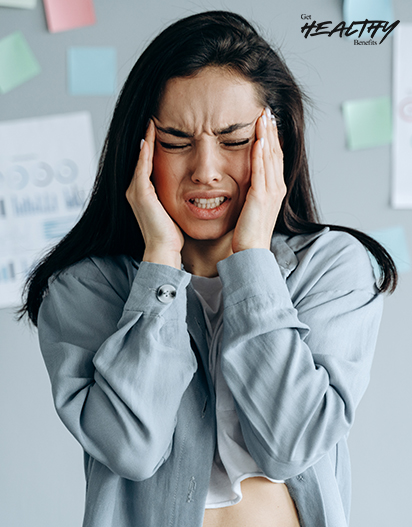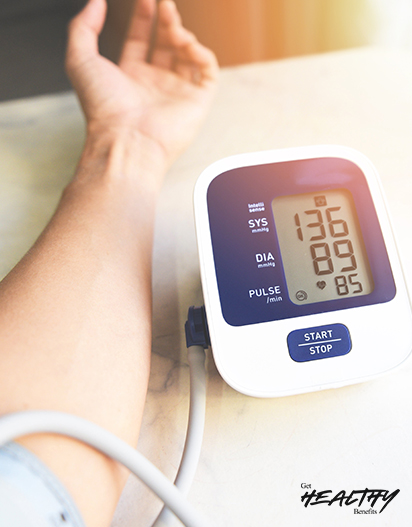Panic Attack vs. Anxiety Attack: Understanding the Difference?
In today's fast-paced world, stress and anxiety have become common experiences for many individuals. However, it's important to distinguish between panic attacks and anxiety attacks, as they have distinct characteristics and require different approaches for management and treatment. This article aims to shed light on the key differences between panic attacks and anxiety attacks, including their symptoms and manifestations.
Anxiety and panic attacks can happen suddenly, leaving you confused about what happened. These conditions are unpleasant, and many people can tell you how unexpected and worrying the experience can be.
Imagine you're staying up late to finish work when you unexpectedly feel a sharp pain in your chest for a few seconds. It goes away quickly, and you wonder if it is all in your head. But when it happens again, you start feeling really warm and sweaty. You might start worrying if it's a heart attack or some other heart problem.
In situations like this, you might be having a panic attack. Panic attacks are often discussed, and many people go through them. It can also be a part of a bigger anxiety problem called panic disorder.
Anxiety attacks are not discussed as much and are often considered the same as panic attacks. But that's not true at all. Even though people use the terms interchangeably, anxiety and panic attacks differ. They can have different symptoms and causes.
This blog will discuss the differences between these two conditions, how to help yourself or someone having an attack, and the possibility of having a panic disorder or another type of anxiety disorder.
Which Symptoms Make Panic Attacks and Anxiety Attacks Different?
Before we talk about the differences, let's look at the symptoms that both panic attacks and anxiety attacks have in common. These shared symptoms often make it hard to tell the two conditions apart.
Panic Attack vs Anxiety Attacks - Common Symptoms:
The following symptoms can occur during both panic attacks and anxiety attacks. Remember, everyone is different, so not all symptoms may affect you. The vital thing is to pay attention to your body's signals and identify any triggers that make you feel anxious or different.
Feeling dizzy.
Excessive worrying or being unable to stop worrying.
Being easily irritable or getting easily upset.
Breathing difficulties or shortness of breath.
Feeling tired or having low energy.
Problems with sleep.
Trouble concentrating.
As we can see from these common symptoms and the names of these conditions, worry and anxiety are vital features. Because of these similarities, people often mix up panic attacks and anxiety attacks. However, the two have essential differences, which we will explore further.
Panic Attack vs Anxiety Attacks - Differences:
Knowing whether you're dealing with anxiety or a panic attack can be tricky. Here are some things to consider:
The severity of Symptoms: Panic attacks have more intense and severe symptoms than anxiety attacks. While both types share similar physical and emotional signs, panic attacks stand out because they can involve a sense of dread, fear of dying, losing control, and feeling detached.
Duration: Anxiety attacks can last extended periods, sometimes stretching out over days, weeks, or even months. They often become more intense over time. On the other hand, panic attacks are usually shorter, typically lasting around 30 minutes or less.
Triggers: Panic attacks often seem to come out of nowhere without any apparent warning or triggers. On the other hand, anxiety is commonly linked to the anticipation of a stressor, event, or situation, particularly the sense that something terrible is about to happen.
What Are Anxiety Attacks?
Anxiety attacks, not recognized as official clinical term, are commonly used by individuals with anxiety to describe intense and prolonged periods of stress. The term "anxiety attack" emerged as people felt anxiety significantly impacted their lives. While not as severe as a panic attack, anxiety is characterized by overwhelming feelings beyond regular anxiety. Mental health professionals began paying attention to this term as it gained popularity among clients during therapy sessions.
However, it's important to note that there isn't an official definition for an anxiety attack yet, even though the distinction between anxiety and panic attacks has become more apparent over time.
Common Causes
The actual cause of anxiety attacks is unknown, but several factors likely contribute to them. These can include perceived threats, an existing anxiety disorder, or a response to specific situations.
Perceived threats: Sometimes, anxiety attacks occur when a person feels anxious about something unknown. For example, walking alone on a night street can make someone nervous or anxious. In this case, the anxiety attack is not caused by a specific danger but rather by the possibility of something terrible happening. Perceived threats can be a normal response to potentially risky situations.
Anxiety disorders: Different types of anxiety disorders can contribute to anxiety attacks. These include obsessive-compulsive disorder (OCD), generalized anxiety disorder (GAD), social anxiety disorder, and various specific phobias. Each of these conditions has its own characteristics and triggers.
Specific situations: Certain situations can trigger an anxiety attack, even if the initial response is a normal stress reaction. The anxiety can escalate beyond a typical reaction, resulting in an anxiety attack. Examples of such situations include job changes, marital status changes, becoming a parent, financial stress, public speaking, the death of a loved one, work stress, illness diagnosis, intense conflict, school exams, and more.
Risk factors
Chronic stress, traumatic events, genetics, substance abuse, excessive caffeine consumption, and certain medications can also increase the risk of experiencing severe anxiety attacks.
What Does an Anxiety Attack Feel Like?
During an anxiety attack, both mental and physical symptoms can occur.
Mental Anxiety attack symptoms: Mental symptoms of an anxiety attack may include excessive irritability, constant worry or apprehension, difficulty concentrating, fear, distress, a general sense of uneasiness, restlessness, and more.
Physical Anxiety attack symptoms: Physical symptoms of an anxiety attack can include disturbed sleep, excessive fatigue, feeling tense, an increased heart rate, heart palpitations, chest pain, dry mouth, throat tightness, sweating, heightened startle response, dizziness, numbness or tingling sensations, shaking, and more.
It's necessary to note that these anxiety attack symptoms can differ from person to person, and individuals may experience a combination of different symptoms during an anxiety attack.
What Is Panic Attack?
Panic attacks are easier to understand because they have a clear clinical definition. According to experts, a panic attack is a sudden episode of intense fear that causes strong physical or mental reactions even when there is no real threat or clear reason for it.
Common Causes
Panic attacks can be triggered by similar things that cause anxiety attacks. Stress, social situations, phobias, and even driving can all trigger a panic attack. People with panic disorder, characterized by repeated attacks, are more likely to experience panic attacks. If you suspect you have panic disorder, working with a mental health specialist to manage the symptoms and find appropriate treatment is advisable.
Certain traumatic events can also lead to panic disorder. For example, witnessing sudden or graphic deaths can be so traumatic that it makes people feel like they might die at any moment, resulting in a panic attack.
Risk factors
The risk factors for panic attacks are similar to those for anxiety attacks. They can include experiencing stressful life events, witnessing a trauma, being diagnosed or living with a chronic health condition, having another mental health condition like depression, engaging in substance use or abuse, and having family members with panic disorders.
What Does a Panic Attack Feel Like?
The significant difference between a panic attack and an anxiety attack lies in the mental and physical symptoms experienced during a panic attack.
Mental symptoms: During a panic attack, individuals may experience excessive fear, a sense of detachment, fear of dying, fear of losing control, and other related feelings.
Physical symptoms: The physical symptoms of a panic attack are similar to those experienced during an anxiety attack. They can include a racing heart, heart palpitations, shortness of breath, chest pain, sweating, dry mouth, trembling, feeling faint or dizzy, throat tightness, and other physical sensations.
It's important to note that the symptoms may vary from person to person, and individuals may experience a combination of different symptoms during a panic attack.
Panic Attack Or Anxiety Attack?
Diagnoses
Doctors are not able to diagnose specific "anxiety attacks," but they can diagnose the following:
Anxiety attack symptoms: Doctors can assess and identify symptoms related to anxiety.
Anxiety disorders: They can analyze different anxiety disorders based on specific criteria.
Symptoms of Panic attack: Doctors can diagnose panic attacks based on the symptoms experienced.
Panic disorders: They can also diagnose panic disorder, a condition characterized by recurrent panic attacks.
To make a diagnosis, a doctor will ask you about your symptoms and may conduct various tests to rule out other health disorders that may have similar symptoms, such as heart disease or thyroid problems.
To reach a diagnosis, the doctor may perform the following:
A physical examination: They will examine your body and ask about any physical symptoms you are experiencing.
Blood tests: These tests can help rule out any underlying medical conditions that may be causing your symptoms.
Heart tests, like ECG or EKG: This test can check the electrical activity of your heart to ensure there are no issues.
A psychological evaluation or questionnaire: The doctor may ask questions about your thoughts, feelings, and behaviors to assess your mental fitness and determine if you meet the specific anxiety or panic disorder criteria.
These diagnostic procedures are essential for understanding your condition and developing an appropriate treatment plan.
Treatment
Discussing treatment options with a doctor is important if you're experiencing anxiety or panic attacks. Here are some treatments they may talk to you about:
Counseling and Therapy
Talk therapy can help manage anxiety and panic disorders. It may include:
Cognitive Behavioral Therapy (CBT): This therapy helps you change your perspective on worrying situations and develop strategies to cope with triggers.
Cognitive Therapy: It focuses on identifying and challenging unhelpful thoughts that contribute to anxiety disorders.
Exposure Therapy: This therapy gradually exposes you to feared situations, allowing you to learn how to confront your fears.
Relaxation Techniques: Techniques like deep breathing, guided imagery, and progressive relaxation can help you relax and manage anxiety. A doctor can guide you through these techniques.
Therapy sessions can be individual or group-based, depending on your needs and preferences.
Medication
Your doctor may suggest certain medications to help with anxiety and panic attacks. These can include:
Anti-anxiety drugs: Benzodiazepines are fast-acting sedatives that can provide quick relief from symptoms. However, they are generally prescribed for short-term use due to the risk of dependence.
Antidepressants: Medications like selective serotonin reuptake inhibitors (SSRIs) and serotonin-norepinephrine reuptake inhibitors (SNRIs) can be prescribed for long-term use to manage symptoms.
Beta-blockers: These medications can help control physical symptoms such as a rapid heart rate associated with anxiety.
It's essential to note that all medications can have side effects. SSRIs and SNRIs may take time to show their full results. At the same time, benzodiazepines should only be used for short durations to minimize dependence risks.
Often, a combination of treatments is recommended, and your treatment plan may need adjustments over time based on your progress and needs. Contacting your doctor can help you find the most effective approach.
Treat Panic Attacks or Anxiety Attacks At Home
Suppose you're dealing with anxiety or panic attacks. In that case, it's important to consult with a doctor or mental health professional to develop a plan to prevent and manage your symptoms. A ready plan can help you feel more in control when an attack occurs.
Here are some safety treatments you can try if you feel that you might be having an anxiety or panic attack coming on:
Take slow, deep breaths:
Concentrate on your breathing by taking slow, deep breaths.
Inhale deeply, feel your stomach expand and exhale slowly while counting down from four.
Repeat this until your breathing slows down.
Recognize and accept your experience: Remind yourself that anxiety and panic attacks are challenging but temporary. Acknowledge that the symptoms will pass and reassure yourself that you'll be okay.
Practice mindfulness: Mindfulness techniques can be helpful for anxiety and panic disorders. Ground yourself in the present moment by actively observing your thoughts and sensations without reacting to them.
Use relaxation techniques: Try relaxation techniques like guided imagery, aromatherapy, or muscle relaxation to help calm your mind and body. Engage in activities that you find relaxing, such as closing your eyes, taking a bath, or using lavender, which has soothing effects.
Treat Anxiety Attack Or Panic Attacks By Some Lifestyle Changes:
Making specific lifestyle changes can also contribute to preventing and managing anxiety and panic attacks:
Maintain a balanced diet with nutritious foods.
Practice meditation or yoga to promote relaxation.
Reduce and control stress-creating things in your life.
Learn to identify and challenge negative thoughts.
Incorporate regular, moderate exercise into your routine.
Join a support group for people suffering from anxiety or panic attacks.
Limit alcohol and caffeine consumption, and avoid using drugs.
Final Words
Remember that panic and anxiety attacks are different, although the terms are often interchangeable. Both anxiety and panic attacks share similar symptoms, causes, and risk factors. However, panic attacks are more intense and accompanied by more severe physical symptoms.
If anxiety or panic-related symptoms significantly affect your daily life, seeking help from a healthcare professional is important. They can provide appropriate guidance and support.
Share this post
Subscribe to new posts











